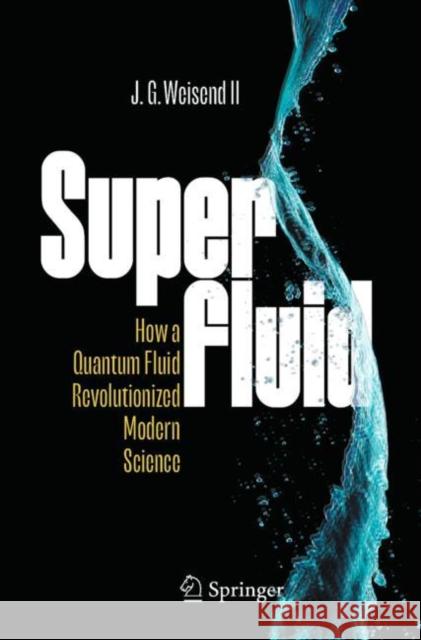Superfluid » książka



(netto: 134,15 VAT: 5%)
Najniższa cena z 30 dni: 127,20
ok. 22 dni roboczych
Dostawa w 2026 r.
Darmowa dostawa!
1) Introduction
2) A Brief Tour of Cold
2.1 Comments on nomenclature: cryogenics, 4He, 3He, phases & He II,
2.2 The race to liquefy “Permanent Gases”
2.3 Discover and sources of He
2.4 Liquefaction of He and the discovery of superconductivity
2.5 The state of helium cryogenics in 1932
3) The Discovery of He II
3.1 Oxford vs. Cambridge
3.2 Mendelssohn liquefies He in the UK
3.3 A second liquid Phase of He is observed in Leiden
3.4 Peter Kapitza
3.5 The refugee scientists at Oxford
3.6 Observations of superfluidity in Cambridge and Moscow
4) Explaining He II: Quantum Mechanics and the Two-Fluid Model
4.1 Bosons and Fermions
4.2 F. London and Bose-Einstein Condensation
4.3 L. Tisza proposes the two-fluid model
4.4 Qualitative description of two-fluid and how it explains He II behavior
4.5 L. Landau’s model
5) The Rotating Bucket5.1 Description of experiment and unexpected results
5.2 How quantized vortices explain the results
5.3 Direct Observation of quantized vortices
5.4 Broader implications of quantized vortices
6) Moving Heat
6.1 Internal Convection
6.2 Mutual Friction
6.3 Practical effects: very small temperature differences, no bulk boiling
7) General Weirdness: Second Sound, Films, Fountains and Porous Plugs
7.1 He films and Mendelssohn’s discoveries
7.2 Second Sound and its applications
7.3 Fountain Pumps, Porous plugs and space explorations
8) Early Applications8.1 First He II cooled SRF accelerators
9) First large-scale applications: Tore Supra, CEBAF, IRAS
9.1 Saturated vs. subcooled He II - Claudet Bath
9.2 Taking a chance: Tore supra, He II and cold compressors
9.3 Taking advantage: CEBAF
9.4 He II in Space: IRAS, COBE and beyond
10) Can You Paddle A Canoe in He II? Development of He II as an Industrial Coolant
10.1 Relationships between projects and research; who is driving whom?
10.2 UW experiments in the 80’s
10.3 CEA experiments in support of Tore Supra and LHC
10.4 SHOOT and He in Space
11) The Large Hadron Collider
11.1 LHC vs SSC
11.2 How to use an existing tunnel
11.3 Industrialization of He II
12) The TeV Superconducting Linear Collider, the International Linear Collider and Superconducting Radio Frequency Based Accelerators
12.1 What comes after LHC? Copper vs Superconducting cavities
12.2 We have to make it cheaper and more reliable
12.3 B. Wiiks’ clever plan
12.4 ILC
12.4 Spin offs from TESLA and CEBAF: SNS, XFEL etc.
13) Turbulence Studies and Wind Tunnels
14) He II Today
15.1 ESS
15.2 LCLS II
15.3 Myrrha
15.3 Chinese accelerators: CIADS, SHINE, S3FEL etc.
15) The Other Superfluid
15.1 The discovery of Superfluid 3He
15.2 Applications
16) The Future
17) Suggestions for Further Reading
John Weisend is currently a Senior Accelerator Engineer at The European Spallation Source and an Adjunct Professor at Lund University. He received his Ph.D. in Nuclear Engineering & Engineering Physics from the University of Wisconsin – Madison, where he investigated engineering applications of He II. He has worked at the SSC Laboratory, the Centre D’Etudes Nucleaires Grenoble, the Deutsches Elecktronen-Synchrotron Laboratory (DESY), the Stanford Linear Accelerator Laboratory (SLAC), the National Science Foundation and Michigan State University. Dr. Weisend’s research interests include He II and large scale accelerator cryogenics. He is the Chairman of the Board of Directors of the Cryogenic Society of America (CSA). He has led the CSA Short Course Program since 2001. He is Chief Technical Editor of Advances in Cryogenic Engineering and Section Editor in Chief for the European Physical Journal Techniques and Instrumentation. In addition to co-authoring more than 60 technical papers, Dr. Weisend he has co-authored or edited several books, most recently (with G. Terence Meaden) a biography of Kurt Mendelssohn, Going for Cold (2021). He was made a fellow of the Cryogenic Society of America in 2021.
Unless you are a specialist or watch a lot of obscure YouTube videos you have probably never heard of He II or superfluid helium. This substance, a unique liquid form of the element helium, is produced and used in multi-ton quantities to enable much of modern science. Altogether, He II is at the heart of more than a dozen large scale scientific facilities world-wide representing an investment of tens of billions of dollars. It cools the magnets and cavities that contain and accelerate the particle beams at the Large Hadron Collider and is also used in accelerators for the study of rare isotopes and nuclear astrophysics. This little known liquid is, in reality, one of the enabling technologies of the future.A manifestation of quantum mechanics, He II exhibits amazing behaviors. It can flow up the side of a container against gravity, it can move through small openings without friction, and it can transfer heat extremely efficiently via a mechanism not seen elsewhere in nature.
This book tells the story of He II. It describes the discovery of the fluid, the observation and understanding of its behavior, the development of underlying theory and the evolution of He II from a laboratory curiosity to an industrial-scale coolant. The current and possible future applications of He II are described.
Like all science and engineering, the story of He II is a human story and the role that personalities, politics, communication, cooperation and competition play in the development of He II is captured here as well. World-famous physicists such as Lev Landau, Richard Feynman, Peter Kapitza and Kurt Mendelssohn are key players in the story, while secret police from two different countries have a walk-on role.
This work is meant for the general reader. Without assuming any expertise in physics, engineering or mathematics, it illuminates for the general public a little-known area of science and engineering and shows why it matters. As it turns out, it’s also a good story.1997-2025 DolnySlask.com Agencja Internetowa
KrainaKsiazek.PL - Księgarnia Internetowa









